Frequently asked Questions
Have Questions? We’ve Got You Covered!
Before your next visit, check out our FAQ section for helpful answers about our services, treatments, and policies. We want you to feel confident and prepared every step of the way.
Massage
The most important thing to keep in mind is that the massage is for your benefit. Remember that you can always ask if you have questions before your session begins. If questions arise during your session, the therapist can answer them for you. When you call to schedule your appointment, you'll want to tell us any preferences you have, if you want cream or oil, what massage type you like, etc. Of course, this is your first massage, so how do you know your preferences? For first-time guests, we recommend a Swedish massage. It's nice and relaxing, plus you still get the therapeutic benefits you're looking for.
Asking for recommendations can be helpful, but nothing compares to firsthand experience. For your first visit to Beni Massage, a Swedish massage is a good recommendation. Not only is it relaxing, but it also provides therapeutic benefits. Click here to learn more about the benefits of massages. However, there are many types to choose from and you might prefer one of our other modalities instead.
For your comfort, we recommend wearing loose, comfortable clothing. You will be draped with a sheet during the massage, so you may undress to your level of comfort.
During your first massage session, you will be greeted by your therapist and asked to fill out a brief intake form. Your therapist will then discuss your goals and preferences for the session before beginning the massage.
Appointments and Scheduling
We recommend scheduling an appointment in advance to ensure availability, walk-ins are not encouraged. You can easily book your appointment online or by calling our office.
Please provide at least 24 hours notice for cancellations or rescheduling. Failure to do so may result in a cancellation fee.
Health and Safety
Certain health conditions may contraindicate massage therapy, so it's important to inform your therapist of any medical issues or concerns you may have before your session. If you're unsure whether massage is safe for you, we recommend consulting with your healthcare provider.
We adhere to strict cleanliness and hygiene protocols to ensure the safety of our clients and staff. Our massage tables, linens, and equipment are thoroughly sanitized between each session, and hand sanitizer is available throughout the facility.
New tattoos can cause pain and itching, so it's best to wait a few weeks until all pain and itching is gone.
Additional Services
Yes! Gift certificates are available for purchase online or in person at our studio. They make a great gift for friends and family.
We offer discounts for first-time clients, package deals and loyalty rewards. We also regularly offer special promotions, so follow us on social media and sign up for our newsletter to stay informed.
